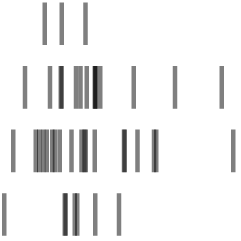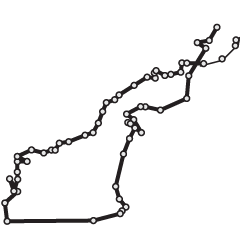World Freedom Atlas is an online geo-visualization tool that shows a number of freedom indicators so to speak. For example, you can map by a number of indexes such as raw political rights score, civil liberties, political imprisonment, freedom of religion, freedom of speech, or torture. If I’ve counted correctly the data comes from 42 datasets divided into three categories:
- What It Is
- How To Get It
- What You Get
What It Is covers data such as political rights and civil liberties while How To Get It is data on government structure and education system. I’m not really sure What You Get is though. There’s GDP and some economic indexes, so it could be something like quality of life. Maybe someone can explain it better?
The mapping and plots are pretty standard, but what stands out is the number of datasets that have been formatted in such a way the user is able to map things quickly and easily. It would be really cool if the data was explained a little better, so that I could “browse” the data a bit more efficiently, and even better, if there were some way to compare indicators against each other. Nevertheless, worth exploring a bit.


 Anheuser-Busch (Budweiser), Miller, and Coors lead the way in beer. Albeit, this is shipment data, not sales data, so take the numbers with a grain of salt.
Anheuser-Busch (Budweiser), Miller, and Coors lead the way in beer. Albeit, this is shipment data, not sales data, so take the numbers with a grain of salt. One of the things I miss most about going to school is hanging out with my cohort. I work from home in Buffalo, and I get bored and restless pretty easily. When I was at school and feeling restless, I could just go down to the stat lounge, sit on the ridiculous-looking Ikea couch, and relax with some classmates. We never sat around and talked about probability theory or the law of large numbers (ok, maybe we did sometimes), but because we were all stat students, we all had this data-ish way of thinking. Know what I mean?
One of the things I miss most about going to school is hanging out with my cohort. I work from home in Buffalo, and I get bored and restless pretty easily. When I was at school and feeling restless, I could just go down to the stat lounge, sit on the ridiculous-looking Ikea couch, and relax with some classmates. We never sat around and talked about probability theory or the law of large numbers (ok, maybe we did sometimes), but because we were all stat students, we all had this data-ish way of thinking. Know what I mean?








 My roommate pointed out a couple of weeks ago that I always get Chinese takeout for dinner; however, we never get home at the same time, and most days, she’s not even in the apartment when I arrive. How could she, a very bright and educated individual, come to such a conclusion after seeing so little data?
My roommate pointed out a couple of weeks ago that I always get Chinese takeout for dinner; however, we never get home at the same time, and most days, she’s not even in the apartment when I arrive. How could she, a very bright and educated individual, come to such a conclusion after seeing so little data? I’m thinking it might be time to revive my step count data collection with a nifty
I’m thinking it might be time to revive my step count data collection with a nifty  For those interested in or who already use
For those interested in or who already use  Visualize This: The FlowingData Guide to Design, Visualization, and Statistics
Visualize This: The FlowingData Guide to Design, Visualization, and Statistics









